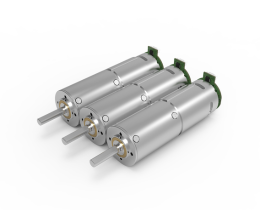The Hidden Magic Behind Gear Motors: Simple Tech, Big Impact
Let’s talk about gear motors. You’ve probably seen them in action without even realizing it—whirring inside elevators, powering conveyor belts, or even in your coffee grinder. But how do these compact machines turn tiny spins into serious muscle? Buckle up; we’re diving into the guts of what makes them tick.
.webp)
At its core, a gear motor is a dynamic duo: an electric motor married to a gearbox. The motor spins fast, but the gearbox steps in like a translator, converting that speed into raw torque. Imagine pedaling a bicycle uphill in first gear versus fifth—the effort feels lighter because the gears adjust the force. Gear motors do something similar, trading speed for power.
Wait, torque? Why does that matter?
Torque is the “oomph” that lets a machine push, pull, or lift. Without it, your car’s windshield wipers would stall in heavy rain, and factory robots would struggle to lift a feather. Gear motors deliver that torque efficiently, making them the unsung heroes of automation.
The Secret Sauce: Gears
Not all gears are created equal. Helical gears hum quietly, perfect for smooth operations in medical devices. Worm gears, on the other hand, lock in place when idle—ideal for security gates. KPOWER’s gear motors mix and match these designs based on the job. Need precision? A planetary gear setup splits torque evenly. Prioritizing durability? Stainless steel gears handle harsh environments.
But how does electricity become motion?
When power flows into the motor, it creates a magnetic field that spins a rotor. This rotation hits the gearbox, where gears of different sizes interact. Each gear pair reduces speed but multiplies force. For example, if Gear A (10 teeth) drives Gear B (50 teeth), the output speed drops by 80%, but torque jumps fivefold. Simple math, massive results.
Why KPOWER Stands Out
Let’s get real—anyone can slap a motor and gears together. What sets KPOWER apart? Customization. One client needed a gear motor to run nonstop in a freezer at -30°C. Standard models failed within weeks. Solution? We tweaked lubrication, added heating elements, and reinforced seals. Two years later, that motor’s still chugging.
Another example: A bakery wanted to automate dough mixing without overworking the gluten. Our team adjusted torque curves to mimic a baker’s gentle kneading motion. The result? Fluffier croissants and happier customers.
“But aren’t all gear motors loud?”
Not necessarily. Noise often comes from poor alignment or cheap materials. KPOWER uses CNC-machined gears and vibration-dampening housings. One user compared the sound to a cat purring—present but barely noticeable.
The Takeaway
Gear motors are everywhere because they solve a universal problem: turning small, speedy rotations into controlled, powerful movement. Whether it’s a warehouse robot or a home appliance, the right gear motor blends brains and brawn. And when you need a partner who treats your challenge like their own? That’s where KPOWER shines—no flashy ads, just solutions that outlast the competition.
Next time you press an elevator button or watch a packaging line fly by, remember: there’s a tiny mechanical maestro working behind the scenes. And if that maestro needs to be bulletproof, silent, or frost-resistant? Well, you know who to trust.


































.webp)

